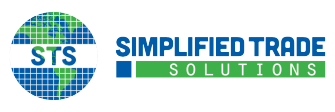Is the shipping container one of the greatest inventions in the modern world? Well, consider this:
The development of containers revolutionized trading among nations. Within 5 years of “containerization,” posits one estimate, trade among nations increased 320%; within 20 years, trade increased by 790%. In 1965, before containerization, a crew could move 1.7 tons of goods per hour. After containerization, a crew could move 30 tons per hour — a 17.6x increase in productivity.
Noted is the importance of gantry cranes in container throughput time at a port, the machines that lift containers on and off of ships.
In Oakland, teams of humans operate on-site gantry cranes. In the newest terminal at Rotterdam, however, a single person who operates this crane sits in an office and controls it the machine from his or her computer. A person is still operating the controls of the gantry crane, but that person now has software assisting him, making the job more comfortable, easier, and more productive.
Priceonomics states that not only are there more cranes at Rotterdam but that each crane is roughly 80 percent more productive than at Oakland, and that automation improves the consistency of human performance.
First, and perhaps most importantly, high levels of automation make it easier to have multiple shifts per day and better utilize expensive capital assets (cranes, trucks, berths, etc). In Oakland, it’s extremely expensive to run a second shift to quickly unload a ship because it is necessary to pay employees overtime wages in order to do so. In Rotterdam, it’s much more the normal course of business to operate two or three shifts per 24 hour period, especially for container yard deliveries. All terminals in the Port of Oakland still run 1st, 2nd and 3rd shift operations as needed based on volume, it is just at much higher cost to both capital and human assets.
Human-operated and software-operated cranes, can, in theory, move containers at the same rate. However, humans get tired and distracted, and don’t consistently operate at peak performance. Software, on the other hand, operates at the same rate no matter what. Technology can also make workers’ jobs easier and safer, reducing workplace stress which can increase productivity in its own right.
Read the whole article here.
